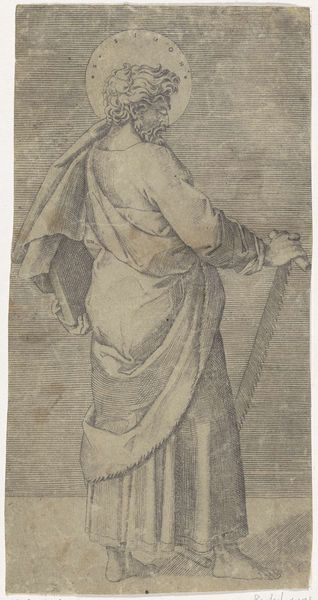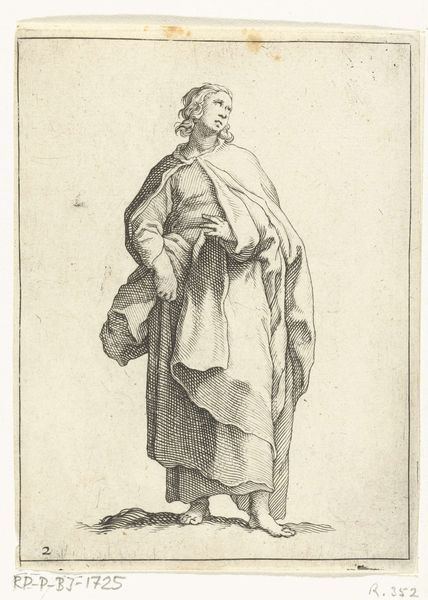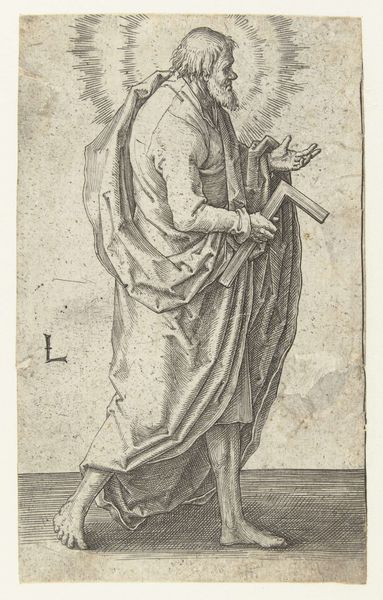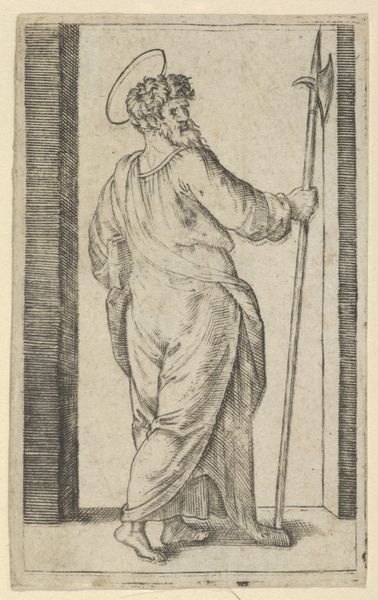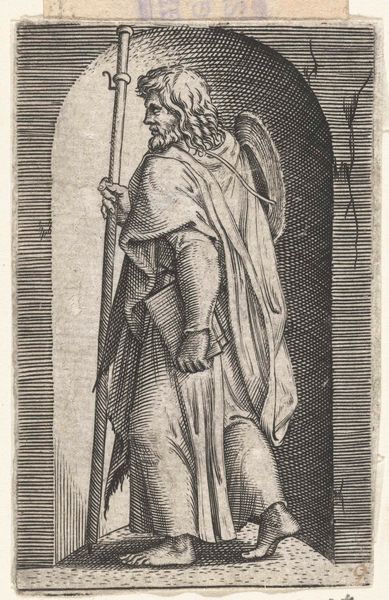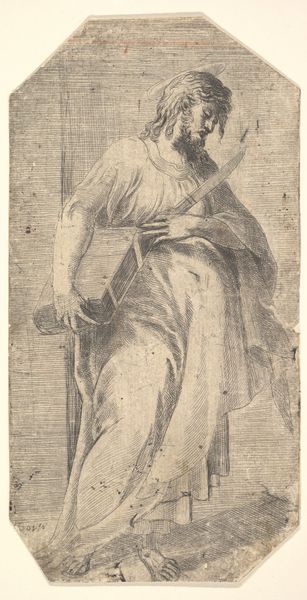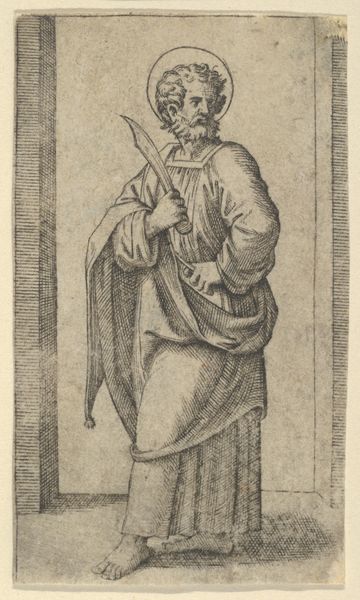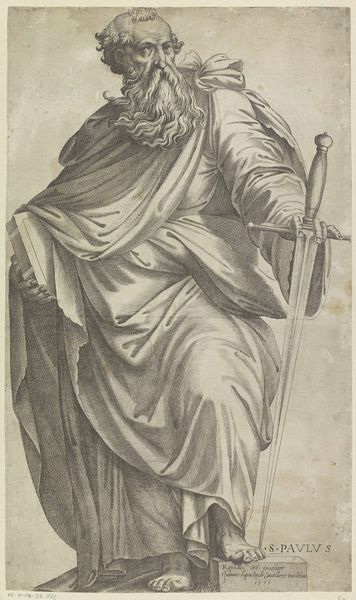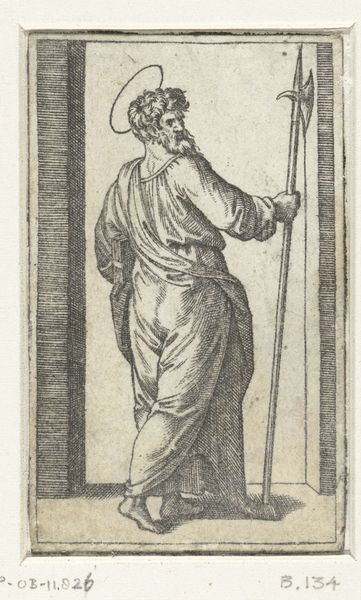
print, engraving
#
portrait
#
medieval
# print
#
figuration
#
history-painting
#
italian-renaissance
#
engraving
Dimensions: height 213 mm, width 140 mm
Copyright: Rijks Museum: Open Domain
Editor: This is Marcantonio Raimondi's engraving of "Apostle Judas Thaddeus with Halberd," created sometime between 1517 and 1527. There's a stillness and serenity about him that I find quite compelling, even though he's holding what looks like a weapon. How would you interpret the symbolism at play here? Curator: Notice how the halberd isn't just a weapon. It’s an attribute, a visual signifier connected specifically to Judas Thaddeus. The cultural memory encoded in that weapon reminds us of his martyrdom; the saw is another, more common attribute, though this is a halberd, a poleaxe. Consider how the Renaissance artists aimed to create recognizable symbolic language. What feelings does it evoke knowing this seemingly gentle figure meets a violent end? Editor: That makes sense. So, the weapon isn’t just about violence but also about remembering a specific story and the saint's identity. It gives the image much greater depth and complexity. Is that what the halo signifies too, as a shared understanding of holiness? Curator: Exactly! The halo immediately codes the figure as holy, but the added inscription "S. Iudas Thaddeus," clarifies it. Even without knowing who Judas Thaddeus was, viewers could decode some basic meanings using universally understood Christian iconographic cues. Think about how those symbols acted as memory aids in a pre-literate society. Editor: It's fascinating to see how much information could be packed into a single image using these visual symbols. So the artists didn't merely create a picture; they were transmitting stories, faith, and historical context to viewers who may not be able to read? Curator: Precisely! These visual elements weren't just aesthetic choices; they served to transmit essential religious, moral, and cultural information. Understanding this unlocks whole layers of interpretation and meaning that make art from the Italian Renaissance like Raimondi's especially potent. Editor: This really has me rethinking how to approach understanding earlier art! It’s about decoding cultural information encoded through visual representation. Curator: I'm glad! It means recognizing that a simple image can carry entire narratives and cultural touchstones within its forms and figures, enriching our own understanding of the past.
Comments
No comments
Be the first to comment and join the conversation on the ultimate creative platform.

